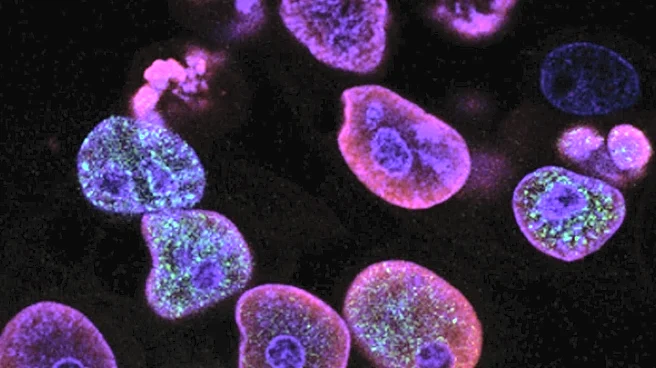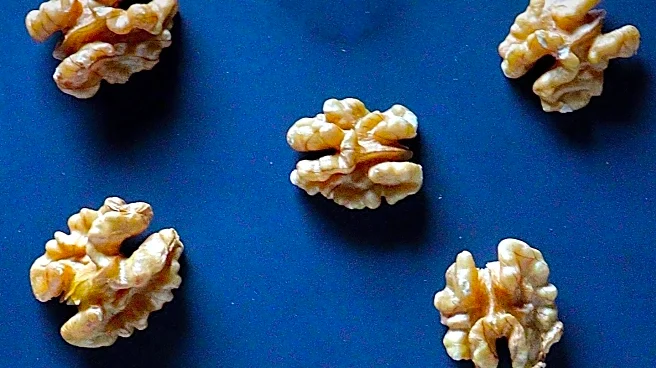What's Happening?
Scientists at Duke-NUS Medical School have developed BrainSTEM, a comprehensive single-cell map of the developing human brain, which identifies nearly every cell type and their genetic signatures. This
map is expected to revolutionize Parkinson's disease treatment by providing a detailed understanding of midbrain dopaminergic neurons, which are crucial for movement and learning. The study, published in Science Advances, highlights the potential of BrainSTEM to improve cell therapy efficacy and minimize side effects by ensuring that laboratory-grown neurons accurately reflect human biology. The research also points to the need for refining experimental protocols to eliminate unwanted cell populations from other brain regions.
Why It's Important?
The development of BrainSTEM represents a significant advancement in neuroscience, particularly for Parkinson's disease, which affects millions worldwide. By providing a detailed cellular map, BrainSTEM enables researchers to produce high-quality neurons for cell therapy, potentially improving treatment outcomes for patients. This innovation could lead to more effective therapies with fewer side effects, offering hope to those living with neurodegenerative conditions. Additionally, the map sets a new standard for brain modeling, ensuring that future research accurately reflects human biology.
What's Next?
The researchers plan to release BrainSTEM as an open-source reference, allowing labs worldwide to use it for further research and therapy development. This will facilitate the creation of more accurate models for Parkinson's disease and other neurological conditions. The team also aims to refine data analysis pipelines to better detect and remove off-target cell populations, enhancing the precision of cell therapies. As BrainSTEM is applied globally, it is expected to accelerate discovery and streamline workflows in neuroscience research.
Beyond the Headlines
BrainSTEM's development underscores the importance of precision in medical research, particularly in the context of neurodegenerative diseases. The ethical implications of using such detailed cellular maps for therapy development will need to be considered, especially regarding patient consent and data privacy. Additionally, the integration of AI-driven models based on BrainSTEM could transform patient grouping and therapy design, leading to more personalized treatment approaches.











